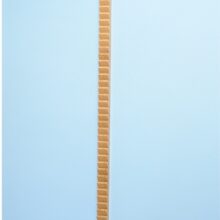Shoulder Pulley with Exercise Tubing and Handles
Login For Health Care Pricing
This Cando set includes tubing, handles, swivel-pulley, and a door anchor. Available in different resistance levels from extra light to extra heavy. Helps to increase Range of Motion of the shoulder.
The CanDo® Shoulder Pulley with Exercise Tubing and Handles helps increase the range-of-motion (ROM) of shoulder. It can be used for prevention and rehabilitation of shoulder injuries. Mount the set to the doorway. The set includes tubing, handles, swivel-pulley, and a door anchor for easy mounting on top of door or in door jamb.
Shoulder Pulley with Exercise Tubing – Key Uses
A shoulder pulley with exercise tubing is a versatile piece of equipment commonly used in rehabilitation, physical therapy, and fitness training to improve shoulder mobility, strength, and range of motion. Here are the key uses of a shoulder pulley with exercise tubing:
Shoulder Range of Motion Exercises
- The shoulder pulley allows for controlled passive and active-assisted range of motion exercises, which are crucial for individuals recovering from shoulder injuries, surgeries, or conditions such as frozen shoulder.
- Passive range of motion exercises involve using the unaffected arm or body weight to move the affected arm through its full range of motion.
- Active-assisted range of motion exercises involve using the exercise tubing to provide gentle resistance while the individual actively moves the shoulder through various planes of motion.
Rotator Cuff Strengthening
- The exercise tubing attached to the shoulder pulley can be used to perform rotator cuff strengthening exercises, targeting the muscles that stabilize and rotate the shoulder joint.
- Exercises such as external rotation, internal rotation, abduction, and scaption can be performed using the exercise tubing to strengthen the rotator cuff muscles, improve shoulder stability, and prevent future injuries.
Scapular Stabilization Exercises
- Scapular stabilization is essential for maintaining proper shoulder mechanics and preventing shoulder impingement and dysfunction.
- The shoulder pulley with exercise tubing can be used to perform scapular retraction, protraction, elevation, and depression exercises, targeting the muscles that control scapular movement and stability.
Shoulder Flexibility and Stretching
- Stretching exercises using the shoulder pulley with exercise tubing can help improve shoulder flexibility and alleviate tightness in the muscles surrounding the shoulder joint.
- Individuals can perform stretching exercises such as shoulder flexion, extension, abduction, and horizontal adduction using the pulley system to gradually increase range of motion and reduce stiffness.
Functional Movement Training
- The shoulder pulley with exercise tubing can be incorporated into functional movement training to simulate activities of daily living and sports-specific movements.
- Functional exercises such as reaching, lifting, pushing, and pulling can be performed using the pulley system to improve shoulder strength, coordination, and stability in dynamic, real-life situations.
Progressive Resistance Training
- The exercise tubing attached to the shoulder pulley provides adjustable resistance, allowing for progressive resistance training as the individual’s strength and range of motion improve.
- Resistance can be gradually increased by using thicker tubing or adjusting the length of the tubing, providing a challenging workout for the shoulder muscles.
Home Exercise Program
- The shoulder pulley with exercise tubing is portable and easy to set up, making it suitable for use in a home exercise program.
- Individuals can perform prescribed shoulder exercises and stretches independently, following guidance from a physical therapist or healthcare provider, to supplement in-clinic or in-office therapy sessions.
In summary, a shoulder pulley with exercise tubing is a valuable tool for improving shoulder mobility, strength, and function in rehabilitation, physical therapy, and fitness settings. It provides a safe and effective way to perform a wide range of shoulder exercises, promoting recovery from injuries, enhancing athletic performance, and preventing future shoulder problems.






Commentaires
Il n'y a pas encore de commentaires